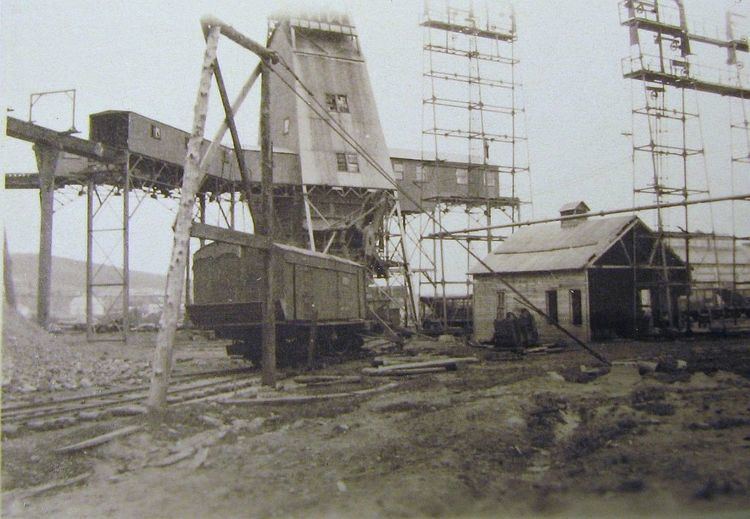Mountains Big Powderhorn Mountain | ||
 | ||
Gogebic range gorge
The Gogebic Range is an elongated area of iron ore deposits in northern Michigan and Wisconsin. It extends west from Lake Namakagon in Wisconsin to Lake Gogebic in Michigan or almost 80 miles. Though long, it is only about a half mile wide and forms a crescent concave to the southeast. The Gogebic Range includes the communities of Ironwood in Michigan, plus Mellen and Hurley in Wisconsin.
Contents
The name Gogebic is Ojibwa for "where trout rising to the surface make rings in the water." "Range" is the term commonly used for such iron ore areas around Lake Superior. The Gogebic Range experienced a speculative iron boom in the mid-1880s, and saw recurring booms and busts from 1884 to 1967.
Iron boomEdit
The iron comes from the Huronian Ironwood formation. It consists of alternating beds of ferruginous oolitic chert and fine-textured cherty carbonates. Iron minerals make up one third of the formation content, the rest being quartz. The formation was discovered in 1848 by Dr. A. Randall during the Fourth principal meridian survey near Upson, Wisconsin. Ore was first produced in 1883 from the Colby Mine in Michigan.
The initial boom in the Gogebic Range came between 1884 and 1886. The discovery of high-grade Bessemer ore on the Gogebic Range and the consequent unfolding of vast possibilities led to a speculative craze the like of which has had no parallel in Michigan or Wisconsin. While it lasted, fortunes were made and lost within a month or even overnight. On September 16, 1886, the Chicago Tribune reported: “Hundreds of people are arriving daily from all parts of the country and millionaires are being made by the dozens ... The forests have given way to mining camps and towns, and a most bewildering transformation has taken place. In the palmy days of gold mining on the Pacific slope there is no record of anything so wonderful as the Gogebic.”
For decades in the late 19th century and into the 1920s, the Gogebic was one of the nation’s chief sources of iron. Iron from the Gogebic helped to fuel the industrial boom in the Upper Midwest during these years. By 1930 mining was winding down in the area. The mines began closing in amid a national economy suffering from the Great Depression. The result was widespread economic devastation in the Gogebic Range.
Some mines continued to operate into the 1960s, but the volume never reached the same levels as in the earlier boom years. A defining event was the last shipment of iron ore in August 1967 to Granite City Steel in Illinois.
Range todayEdit
Today the area has largely recovered from the scars left behind by the iron-mining boom days. The Gogebic Range has developed a tourism industry featuring ski resorts and waterfalls. The region includes vast areas of government-owned land, including the Ottawa National Forest and the Gogebic County Forest, which are managed for recreation and timber. Recreational activities include fishing in rivers and lakes, hiking and snowmobiling, and mountain biking on a network of trails built on old logging roads.
Gogebic County and neighboring Iron County across the state line in Wisconsin are heavily promoted during the ski season as "Big Snow Country". There is also a natural ski hill by Lake Superior at Porcupine Mountains State Park, less than an hour from Ironwood.
Gogebic County has 22 waterfalls, with ten more across the Montreal River in neighboring Iron County, Wisconsin. Significant waterfalls are on the Presque Isle and Black rivers within half a mile (0.8 km) of Lake Superior. There is also the Superior Falls, bordered by 100-foot (30 m) cliffs on the Montreal River forming the Michigan–Wisconsin border northwest of Ironwood.
With metals trading at unprecedented prices during the early 2010s commodity bubble, companies again explored the possibilities of mining in the Gogebic Range to extract remaining, lower-quality ore.
